In terms of aquatic training, you can pass within the club, the Swimming Instructor Certificate (BSB) and the National Certificate of Water Safety and Rescue (BNSSA).
The BSC also offers training to be a first aid trainer, the PSC Trainer, the PS Trainer Gateway, or in the ocean, with the SSA Trainer.
Finally, if you are a company, you can call on us to train your staff in the prevention of hazards in the workplace and introduce them to first aid actions. We organize First Aid Rescuer (OHS) training sessions, with the possibility to move around your premises.
If you have any questions, please do not hesitate to contact Clément at 06.04.01.16.81 or by email at clement.rodolfo@biarritzsauvetagecotier.com
WHEN HAVE YOU TO RECYCLE ?
The validity of the degree varies according to the training.
To find out when to recycle your diploma, see the summary table of continuing training.
| Diplôme | Durée de validité | Recyclage |
|---|---|---|
| Prevention and Civic Aid level 1 | For life | We advise to recycle this training every 3 years |
| First Aid in team – level 1 | 1 year | First Aid level 1 Continuous Training |
| First Aid in team – level 2 | 1 year | First Aid level 2 Continuous Training |
| Prevention and Civic Aid Instructor | 1 year | Prevention and Civic Aid Instructor Continuous Training |
| First Aid Instructor | 1 year | First Aid instructor continuing training |
| National Certificate of Water Safety and Rescue | 5 years | BNSSA recycling |
| Surveillance and Water Rescue | 3 years | Continuous Training |
| Swimming Supervisor Certificate | 5 years | Continuous Training Swimming Supervisor |
| First Aid rescue work | 2 years (date to date) | MAC SST |
TRAINING CALENDAR
Discover the calendar of the different trainings.
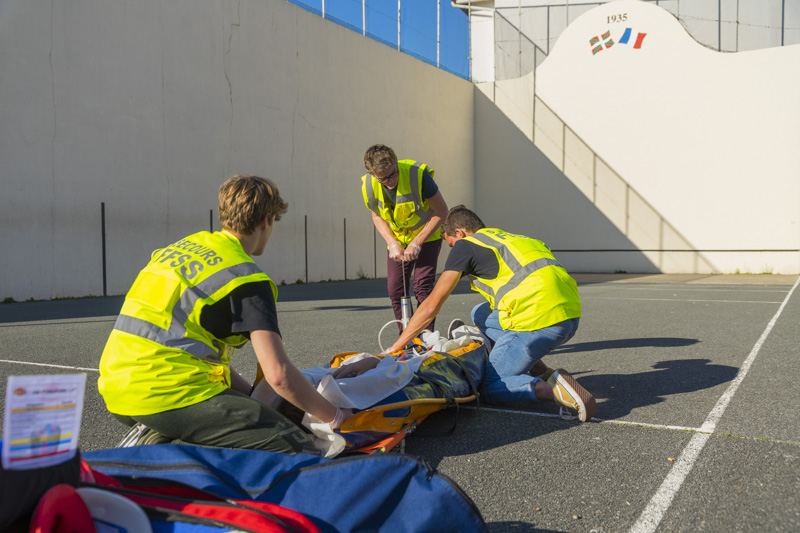

RESCUE
On the street, in your workplace or during your sports activities, you can witness an accident. Lives could be saved if 1 in 5 people knew emergency first aid actions.
There are different training courses to learn how to rescue victims.
To rescue daily
The Prevention and Civic Aid Level 1 (PSC 1) training is a public basic first aid training. It is accessible from 10 years old.
During 7 hours, the learners will acquire basic knowledge and skills in first aid (behaviors in the face of fainting, discomfort, heart attack, etc.).
Team rescue
Longer and more intense (35h), the First Aid in Team Level 1 (PSE 1) training teaches to intervene and carry out emergency actions, alone or as part of a team formed with the use of first aid equipment (within a rescue post or response team).
It is a degree that is accessible from 16 years old, for everyone who wishes to engage in voluntary, voluntary or professional activity on behalf of a community, a private company or a registered civil safety association.
The graduate can then complete his training by the First Aid Team Level 2 (PSE 2), mandatory in some jobs (fire brigade, ambulance, lifeguard at sea, emergency forecasting device, etc.).
During 28 hours, the paramedic learns to intervene within a team of 3 or 4 rescuers, with the appropriate rescue equipment.
This training deepens the knowledge acquired during PSE 1 and teaches immobilization, lifting and transport of a victim techniques.
Annual continuing training is compulsory to continue in the functions assigned to this specific diploma.
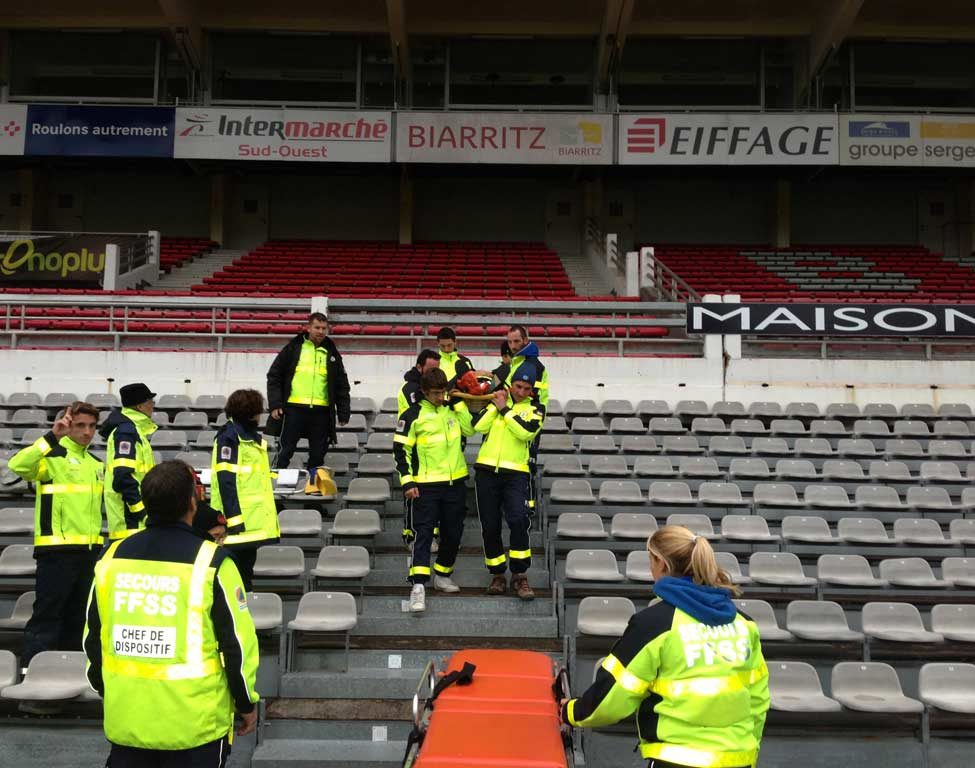
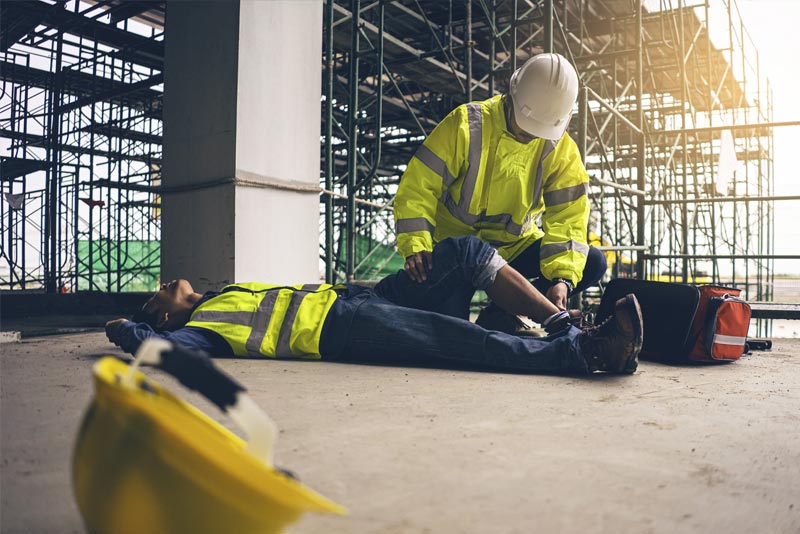
Rescue at work
In France, the presence of rescuers in companies is mandatory (Article R.4424-14 to R.4424-16 of the French Labour Law).
The First Aid Rescuer of the Workplace training teaches an employee of a company, the actions of emergency first aid, in case of accident within the establishment, and to promote the prevention of occupational risks.
For 2 days, future rescuers will practice in situations that reproduce the risks present within the structure, in order to be as efficient and fast as possible.
This degree is valid for 2 years, from date to date. This will require a recycle training (called MAC).
BECOME A LIFESAVER SUPERVISING
The Lifeguard watch a public or private water body that is open to the public, natural (lake, ocean…) or artificial (swimming pool).
Becoming a Lifeguard requires several indispensable degrees. First of all, you will have to take the First Aid Team Level 1 (PSE 1) training, prerequisites to take the National Certificate of Water Safety and Rescue (BNSSA) exam.
You can take the BNSSA exam at 17 years old. The diploma will be awarded at 18 or as soon as the candidate is emancipated.
If you want to be a coastal lifeguard (on the beaches), you will have to complete your training with the First Aid Team Level 2 (PES 2) diploma, which is a prerequisite to the Surveillance and Water Rescue – Shore Option (SSA L) training.
Attention, the whole of this training course is not to be confused with the Swimming Supervisor Certificate (B.S.B.), which allows to monitor only a swimming in a holiday or leisure center.
For more information, see the article dedicated to the Swimming Supervisor.
Also not to be confused with the BPJEPS AAN which itself is a state diploma of sports educator that allows to teach as MNS with a dual competence in teaching and supervision. The BSC does not offer this training but works in collaboration with the Basque Academy of Sport for first aid training.
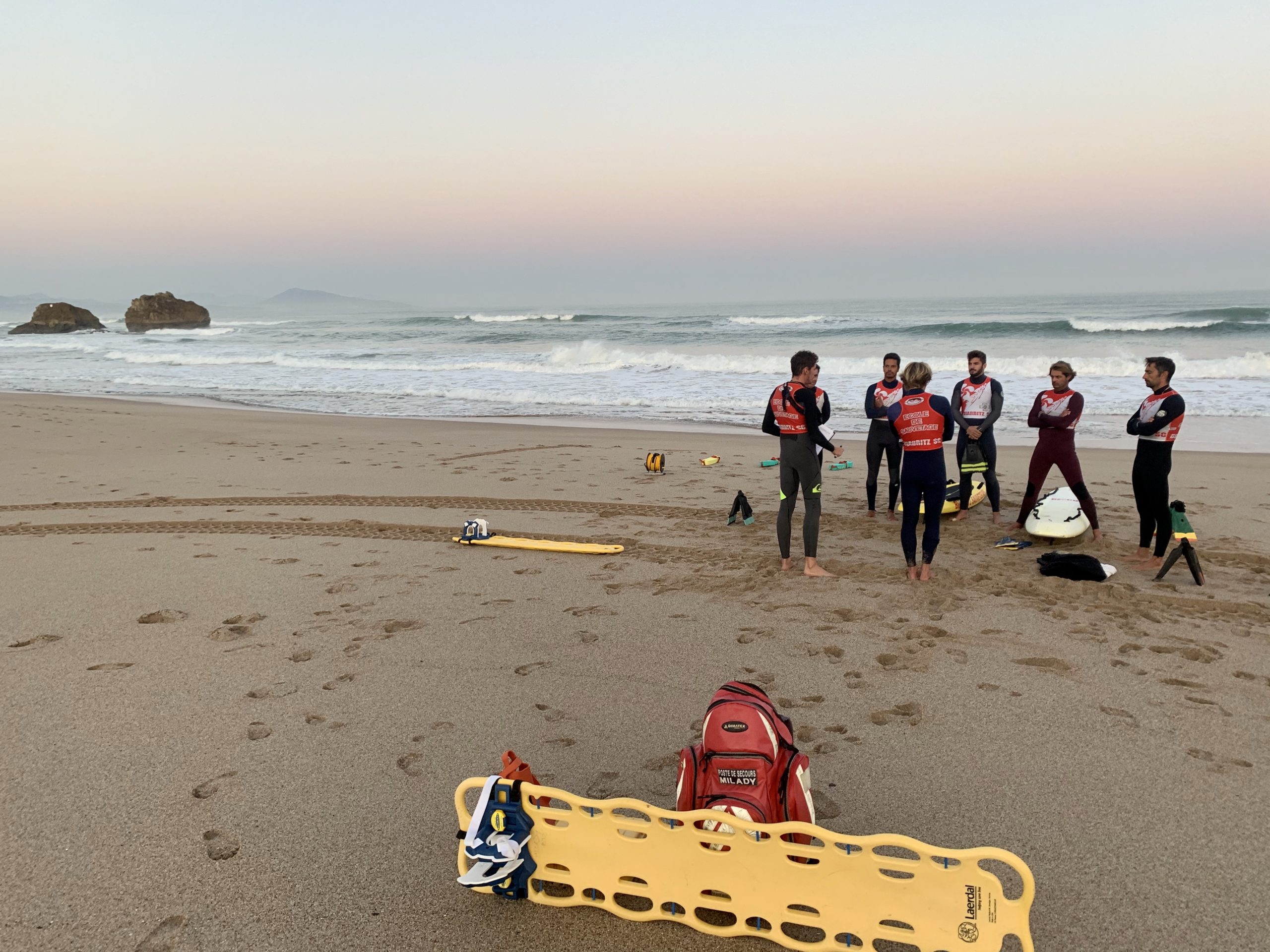
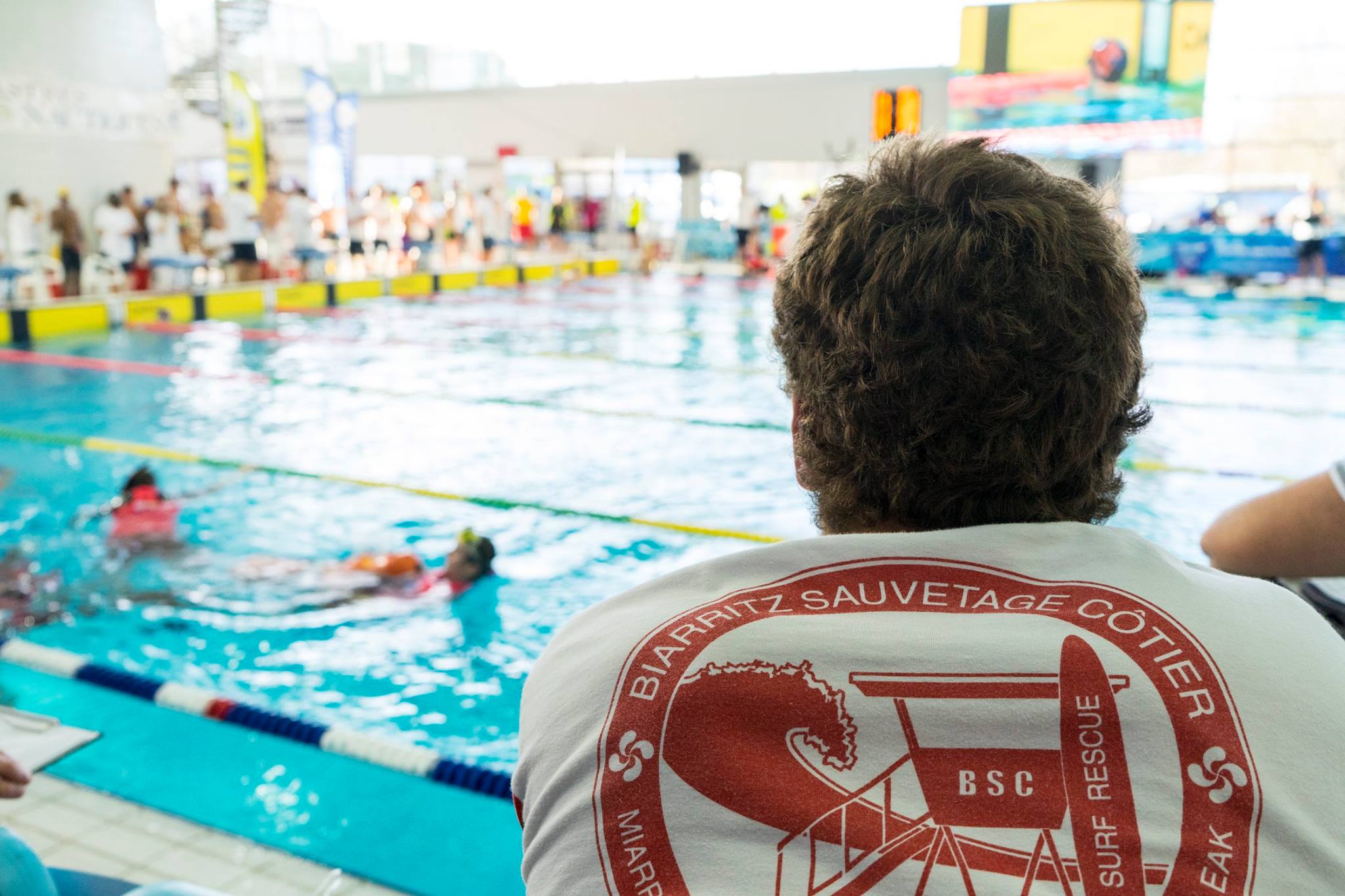
BECOME A SWIMMING SUPERVISOR
A person holding the Swimming Supervisor Certificate (BSB) can supervise a bathing in a holiday or leisure centre. He is also able to organize a swimming of minors on a beach, whether it is supervised or not, provided that he knows perfectly the place of swimming and the infrastructures (emergency post) and that he ensures the marking of the area.
On the date of the exam, the candidate have to be major and hold the Prevention and Civic Aid Level 1 training (included in our BSB training program).
BECOME A VOLUNTEER PARAMEDIC
There is a wide range of accredited civil safety associations, where it is possible to practice first aid on a voluntary basis, as part of First Aid Stations at cultural and sporting events.
The Biarritz Sauvetage Côtier, affiliated to the French Federation of Rescue and First Aid (FFSS) has land but also aquatic amenities (less commonly used) to provide rescue posts.
Volunteer First Aiders have different qualifications depending on the degrees :
- “Trainee” if you hold a Prevention and Civic Aid Level 1 training (available from 10 years old)
- “First Aid Attendant” for First Aid Level 1
- “First Aid Team Member” for First Aid Level 2
- Manager (team leader, post manager, logistics, transmissions, etc.)
To learn how to rescue, you can consult our dedicated article.
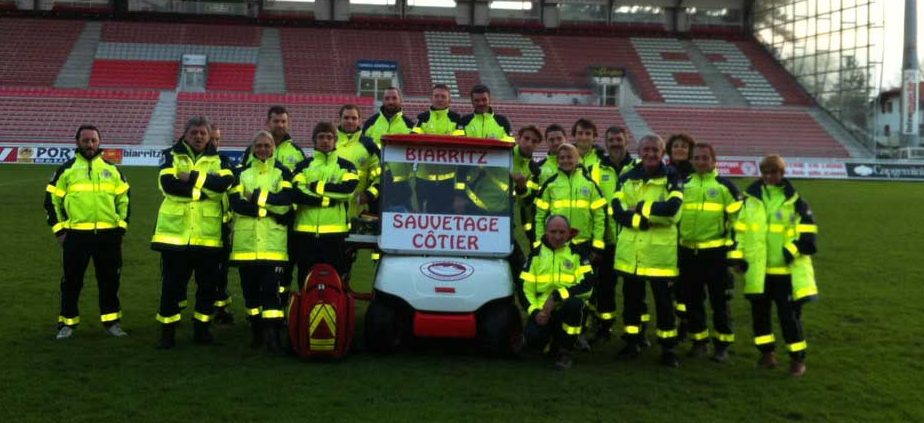
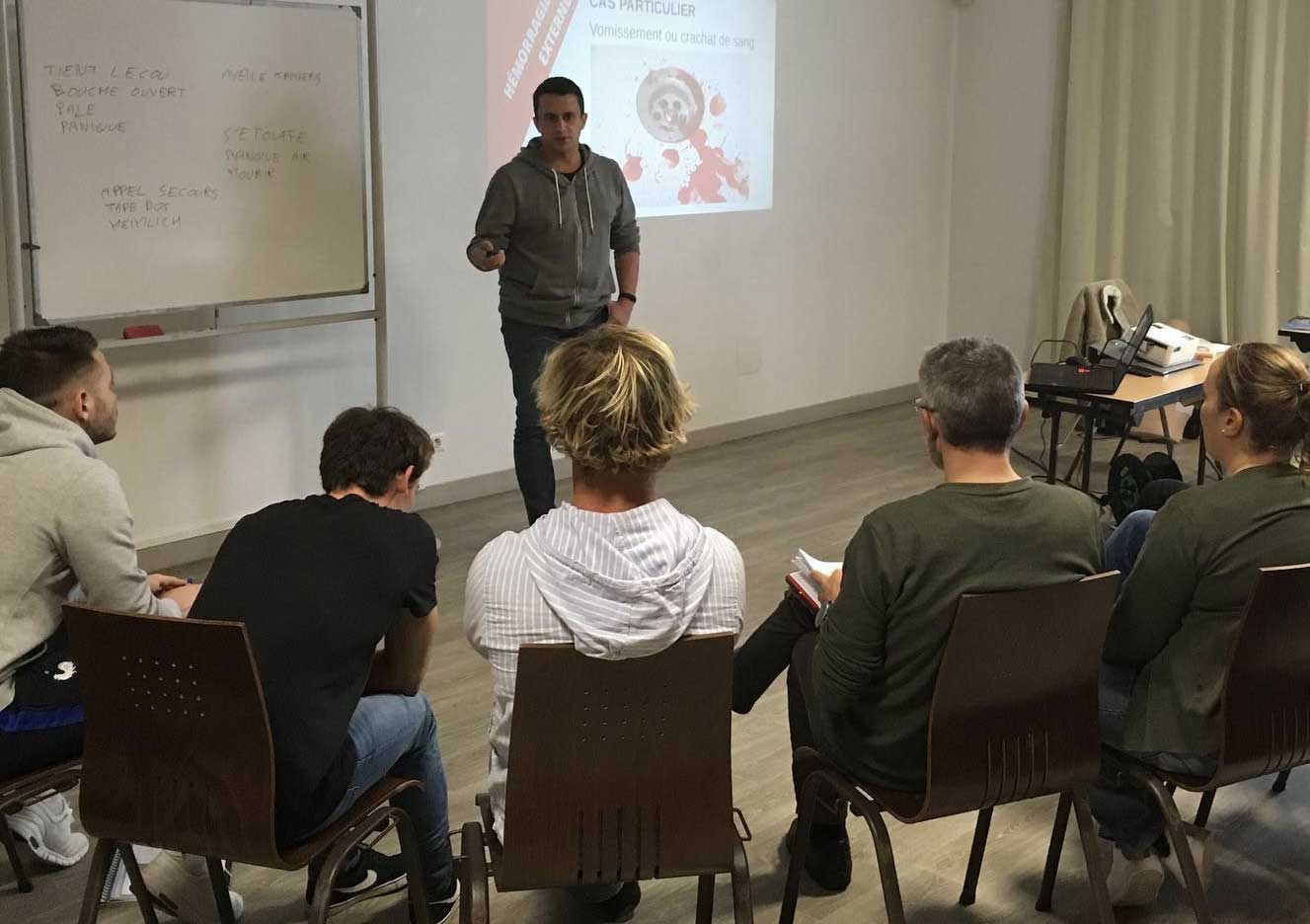
BECOME A TRAINER
Anyone who wants to teach first aid will find the corresponding training within the Biarritz Sauvetage Côtier.
Subject to have a Prevention and civic aid (level 1) diploma of less than 3 years, you can spend this training to teach PSC 1 to learners.
This training of Prevention and Civic Aid Instructor takes place as follows:
- The PIC (Common Initial Pedagogy) teaches the trainer the ability to organise a training sequence, implement appropriate teaching techniques and carry out an evaluation of the participants.
- The PAE 3 (Pedagogy Applied to the Employment of Instructor PSC) allows the trainer to implement his skills and the pedagogical techniques studied previously, as part of the teaching of the training «Prevention and Civic Aid».
The same training course is proposed to teach First Aid in Team Level 1 (PSE 1) and Level 2 (PSE 2).
After obtaining PSE 2, you can track the First Aid Instructor (Fo PS) training. It lasts 70 hours and consists of a PIC and a Pedagogy Applied to the Employment of PS Instructor (PAE 1).
The Biarritz Sauvetage Côtier pedagogical team made the choice not to offer this training directly, judging the learning content too important in the face of time.
On the other hand, the Biarritz Sauvetage Côtier recommends to all candidates wishing to become trainers, to start by obtaining the PAE3 and proposes a simplified training for PSC instructors already holders of the PIC.
This training lasts 35 hours, during which time, the PSC trainer will apply his trainer skills, acquired during the PIC or in the course of acquisition, to the teaching of First Aid (level 1 and 2).
The PS Instructor diploma allows you to teach the following trainings: PSC1, PSE1, PSE2 and their continuing training.
Each year, the trainer will have to update his skills during a minimum of 6 hours of continuous training.
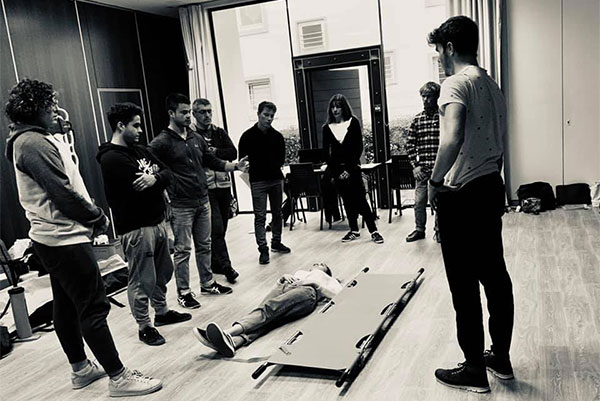
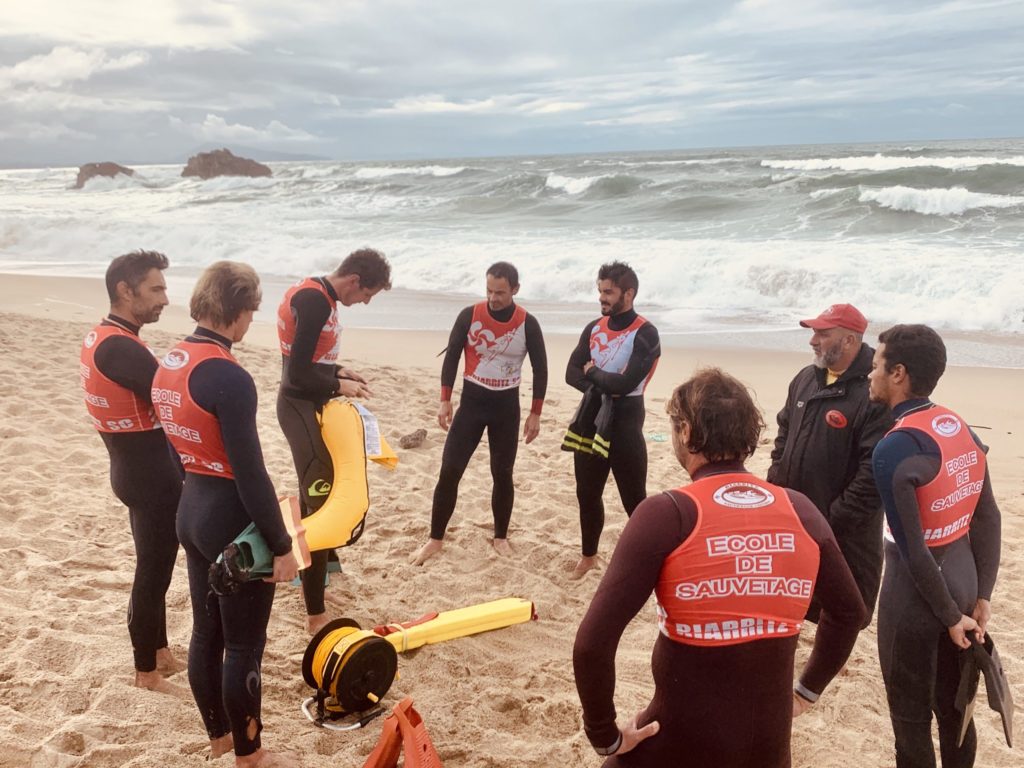
On the aquatic training side, a person holding the diploma of Surveillance and Water Rescue (and therefore of the BNSSA, First Aid in team level 1 and level 2), and who holds the diploma of Common Initial Pedagogy (PIC), can become SAMN Instructor.
During 35h, the trainer will acquire the technical and pedagogical skills required for the teaching of the SSA.
Each year, the trainer will have to update his skills during a minimum of 6 hours of continuous training.
GETTING FUNDED
The Biarritz Sauvetage Côtier is recognized as a professional training organization.
Funding for some First Aid or Water Training is available through:
- Your Personal Training Account (CPF)
Every employee of a company or a collective for at least 1 year, automatically contributes a sum in euros, dedicated to the training.
This fee is kept in a Personal Training Account.
- An OPCO of your professional bank (example: AFDAS)
- Pôle Emploi for the BNSSA (contact via your advisor)
According to your social criteria, your advisor will offer you funding via KAIROS, or will direct you to the Local Mission.
To understand and use the CPF, we propose you 2 tutorials :
